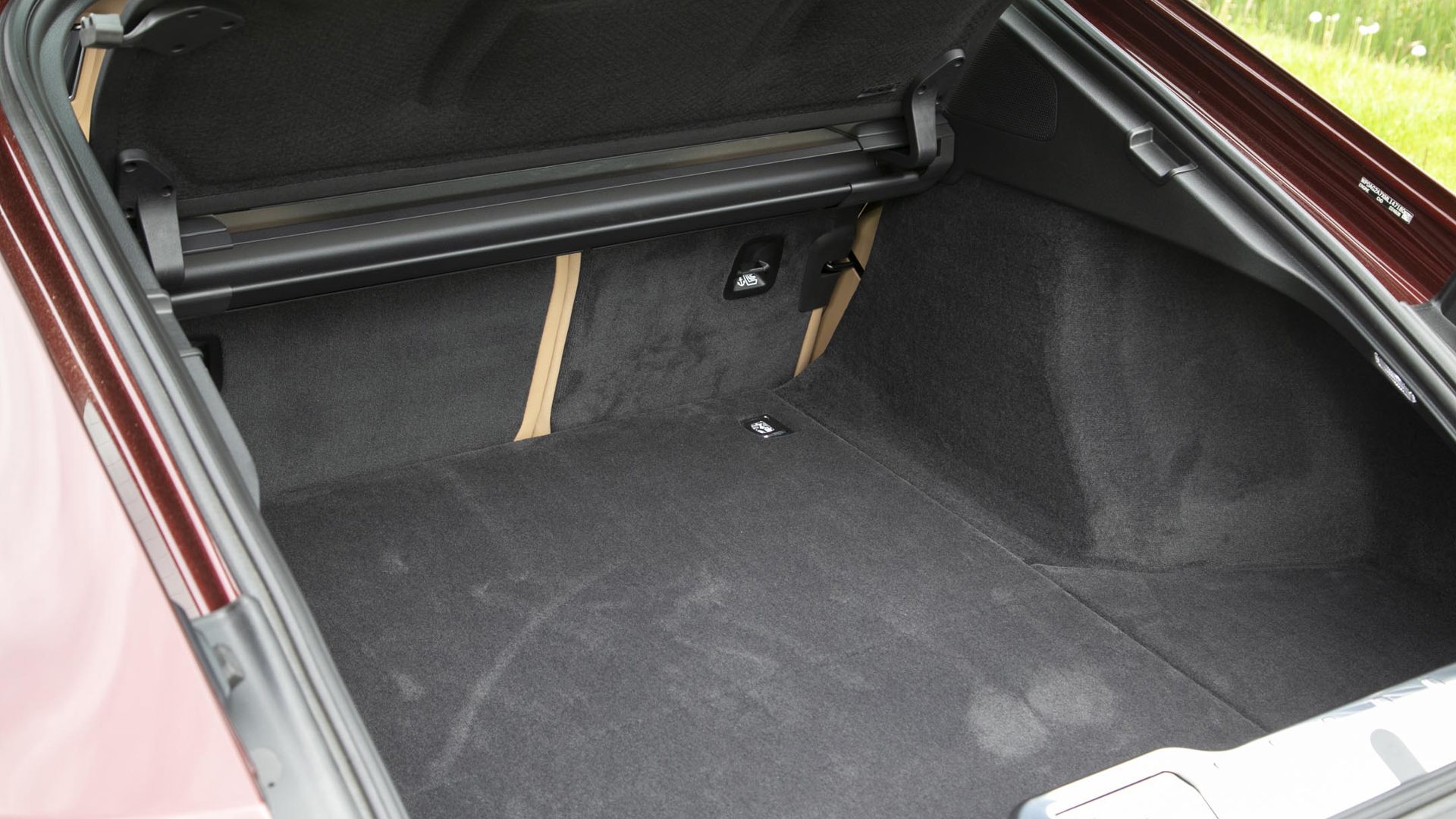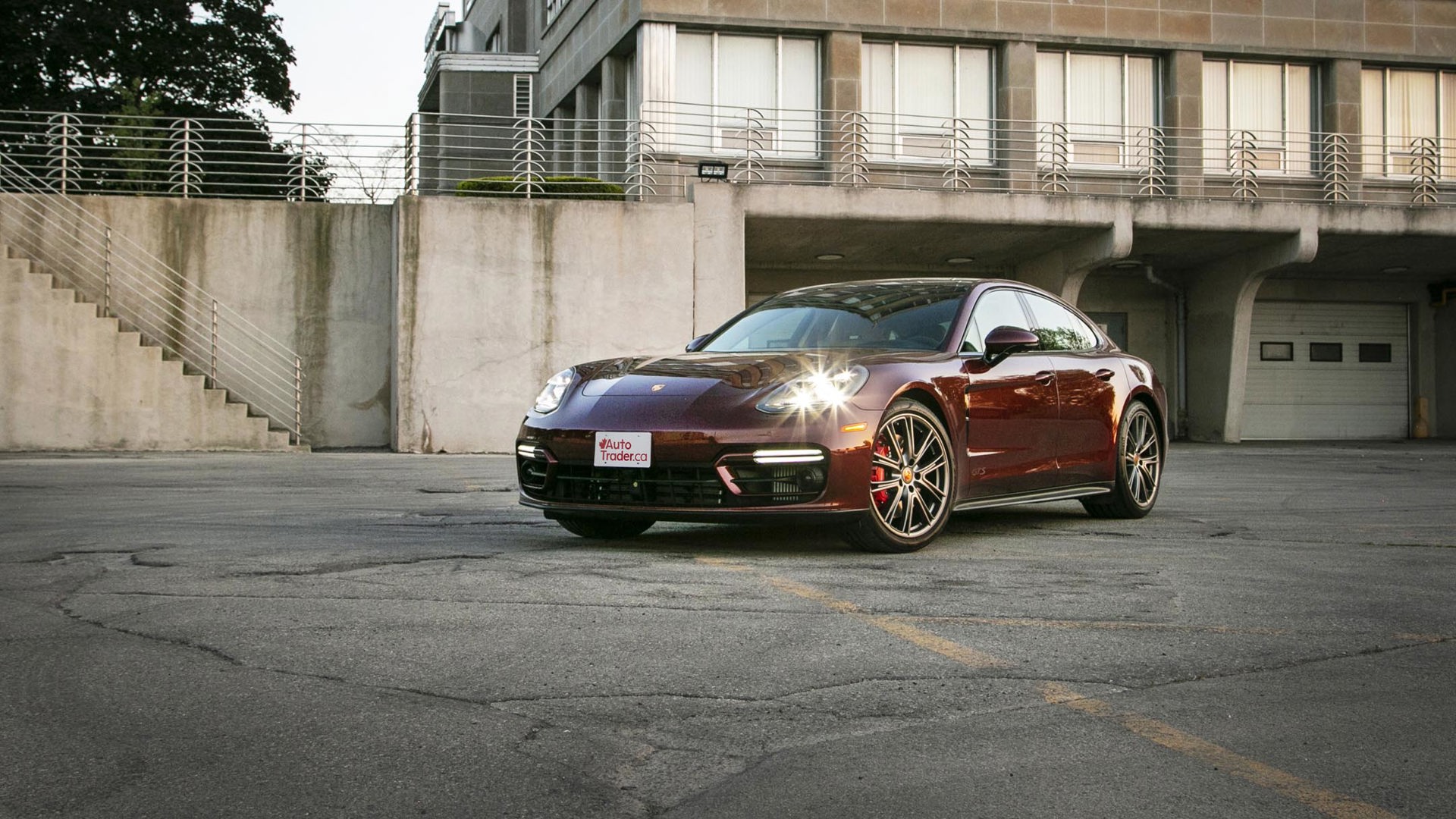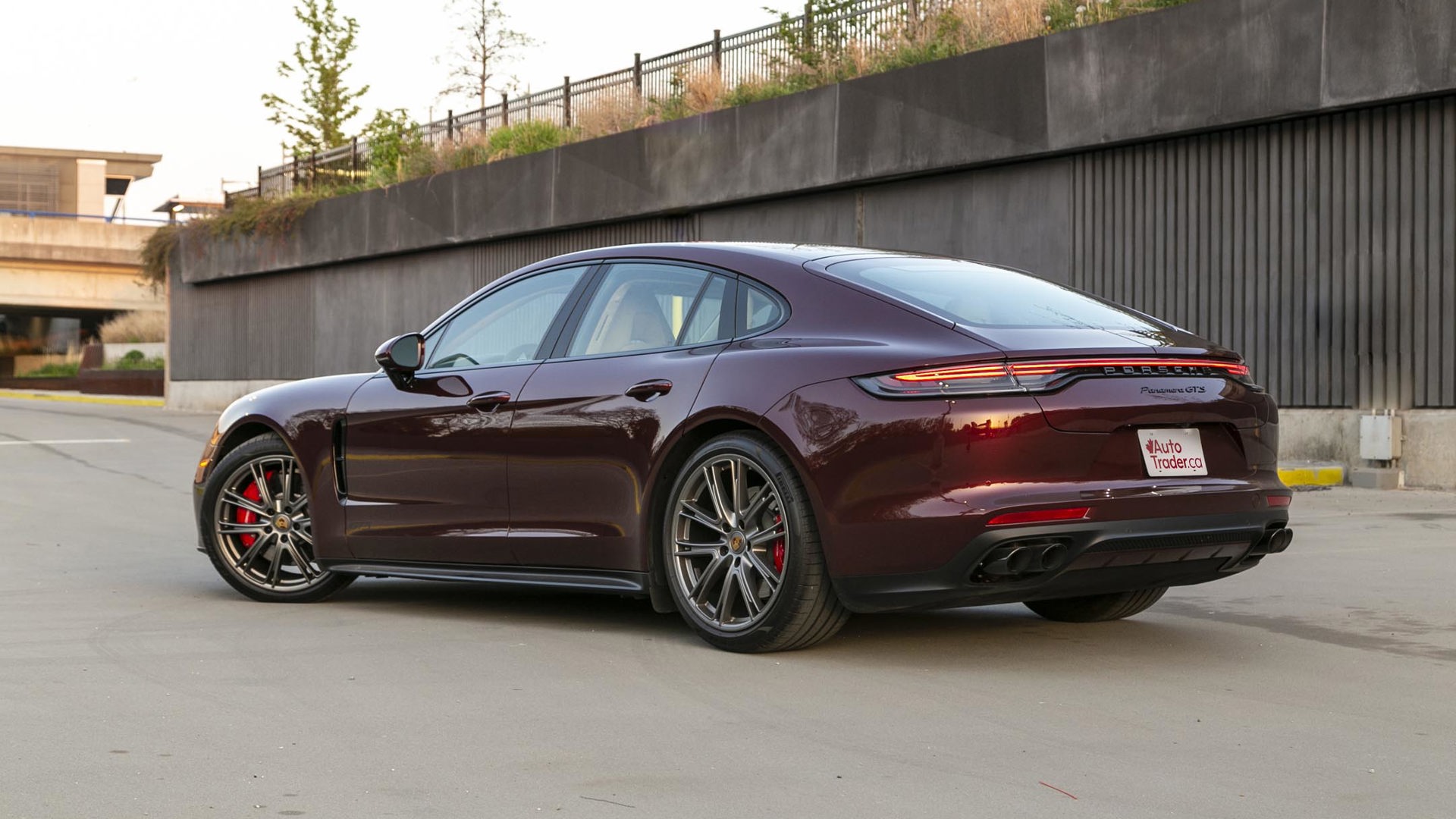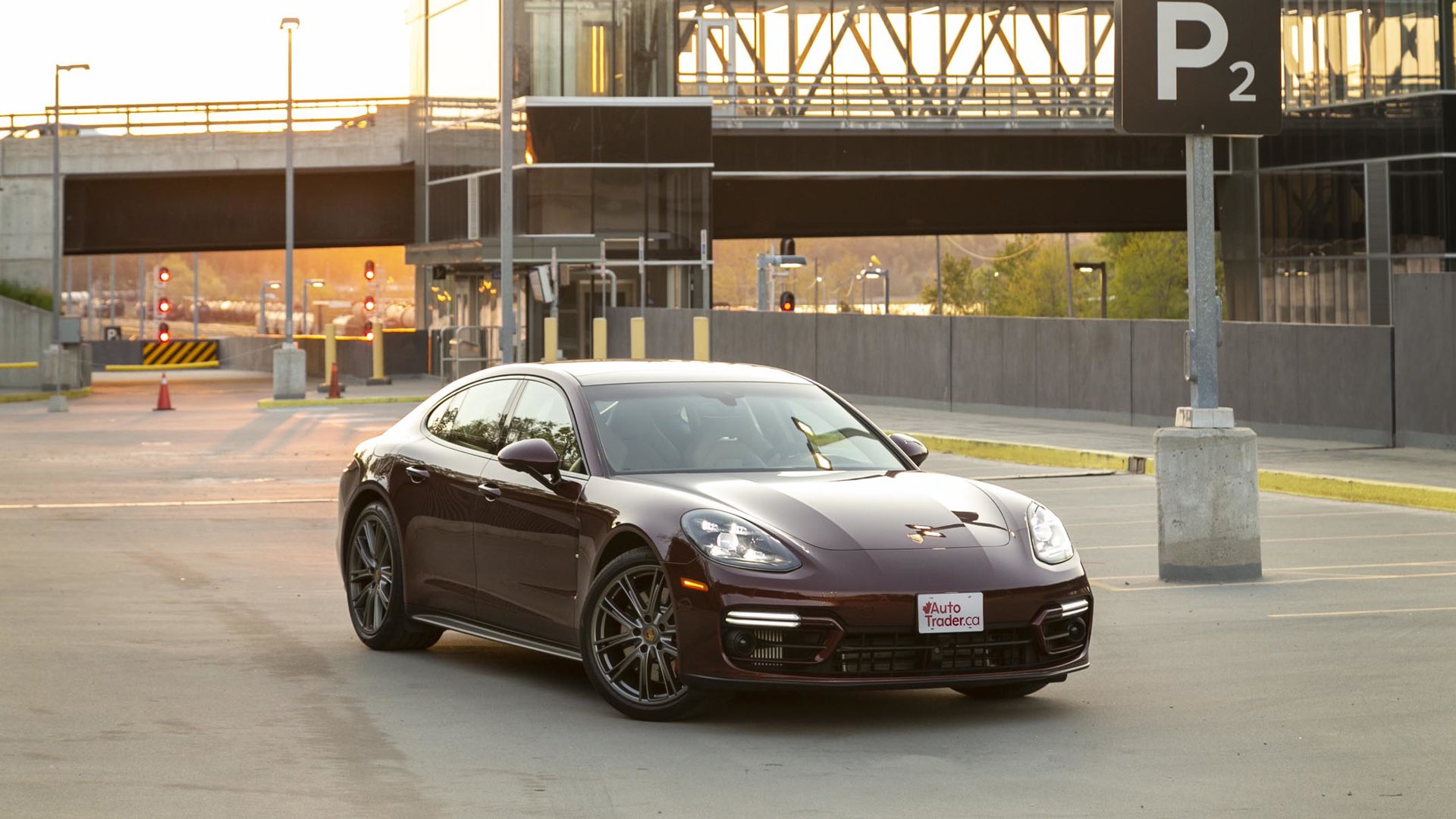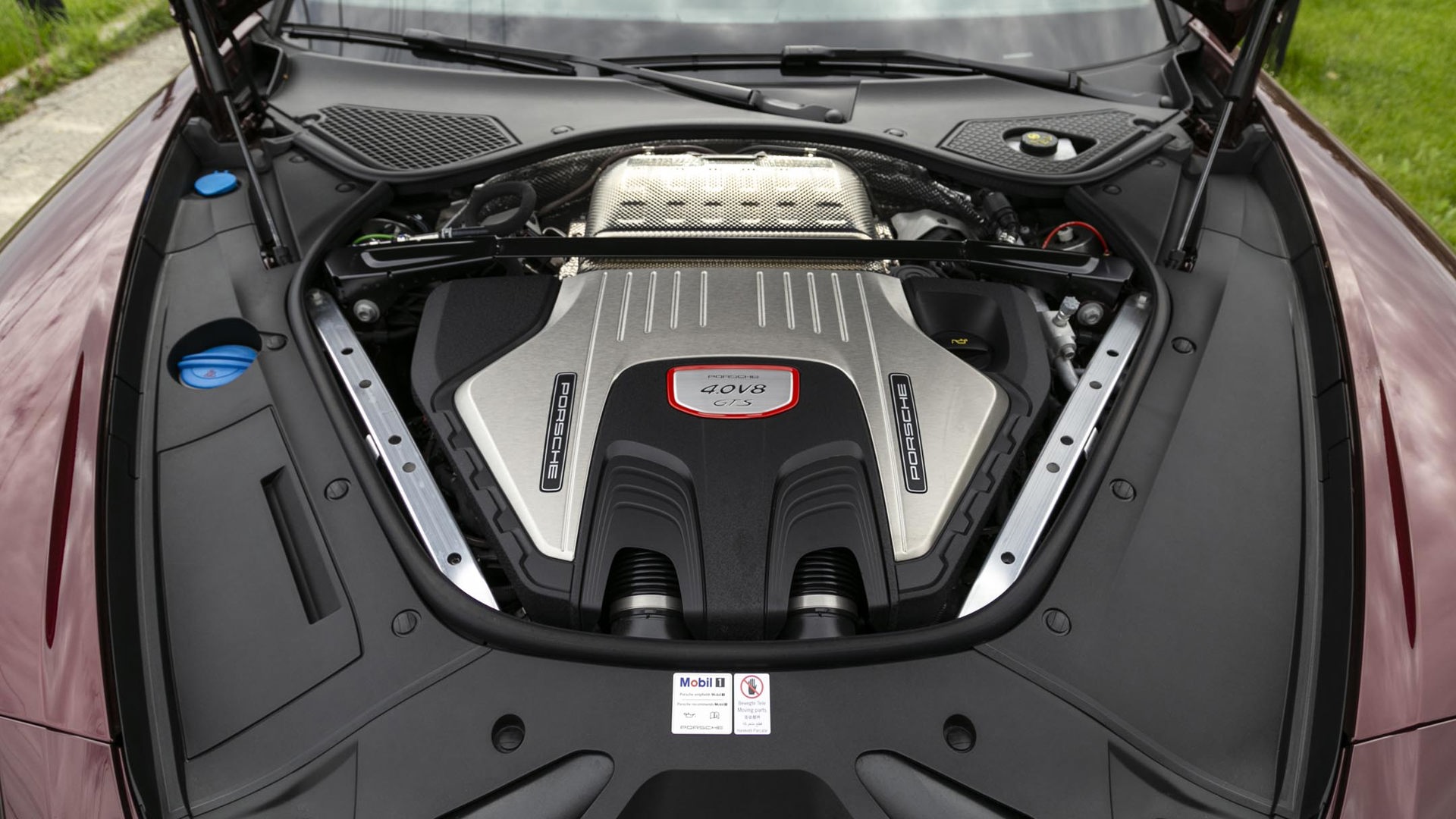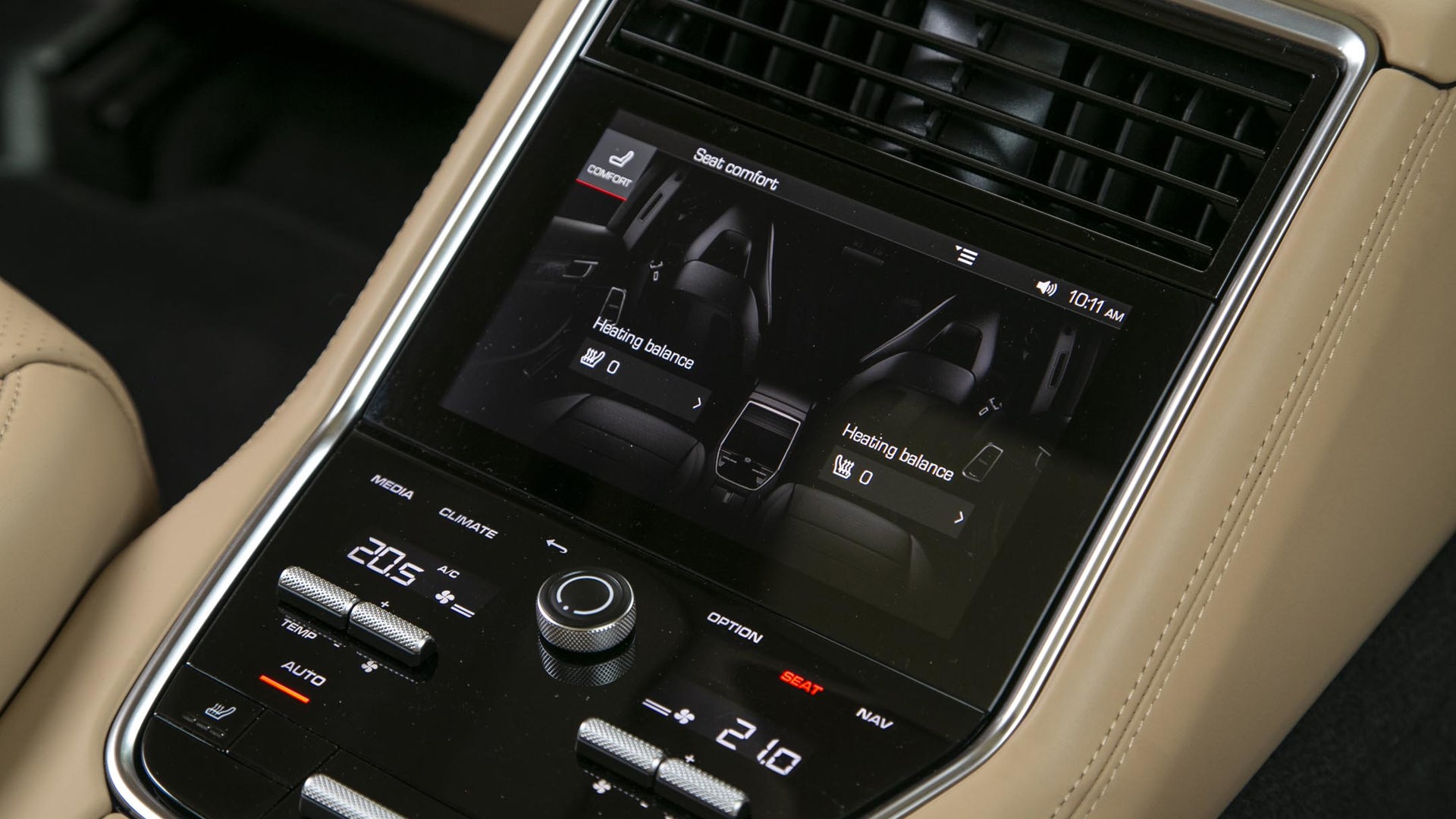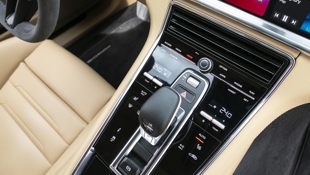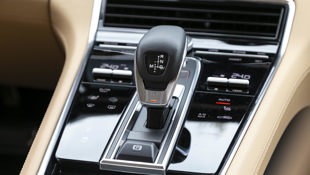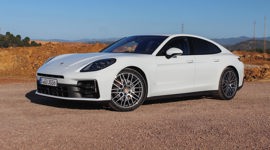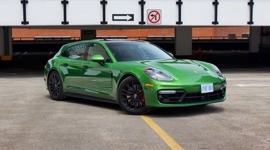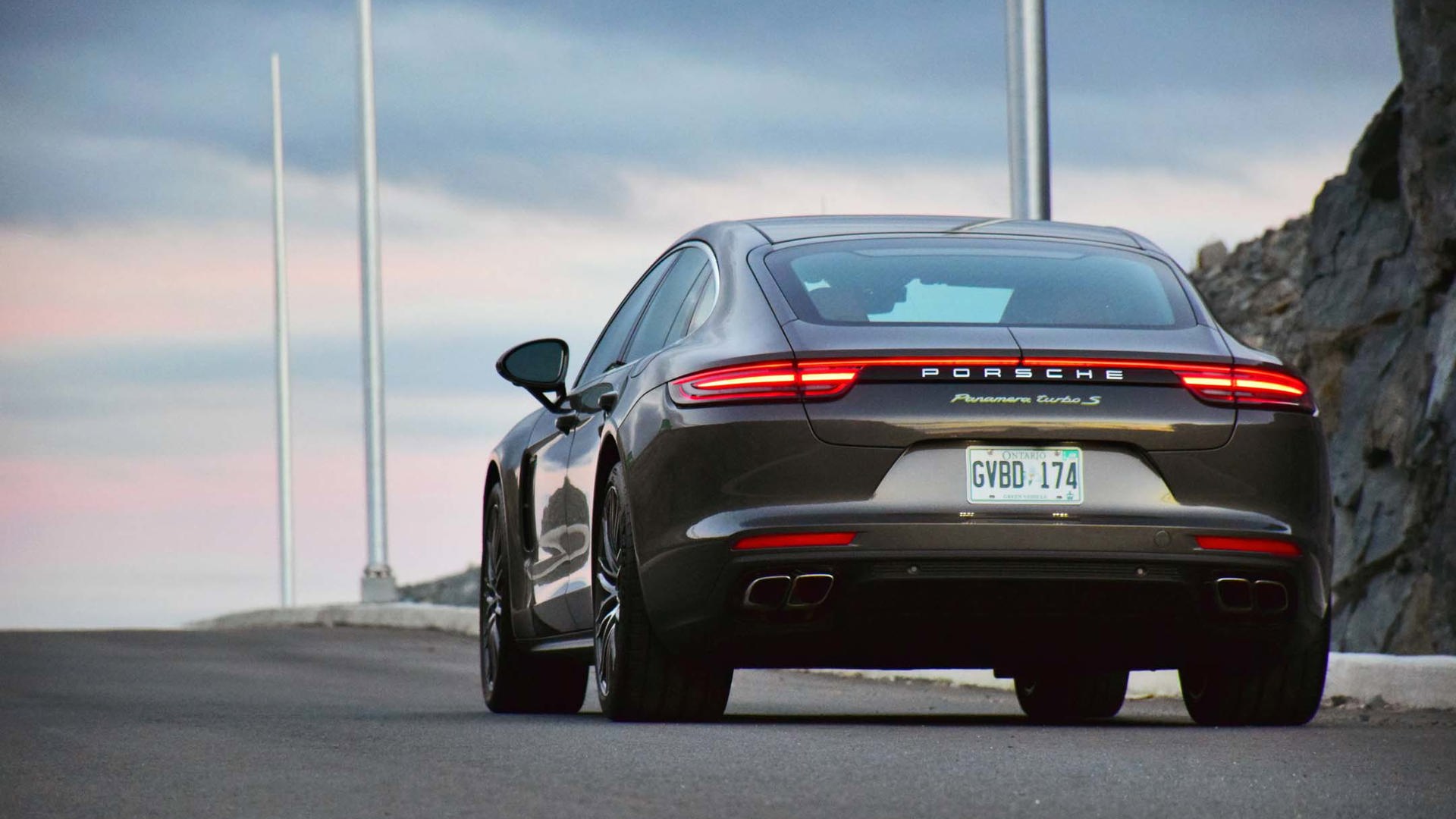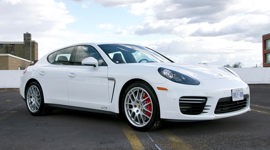 AutoTrader SCORE
AutoTrader SCORE
-
STYLING8/10
-
Safety9/10
-
PRACTICALITY8/10
-
USER-FRIENDLINESS7/10
-
FEATURES8/10
-
POWER8/10
-
COMFORT8/10
-
DRIVING FEEL9/10
-
FUEL ECONOMY6/10
-
VALUE7/10
As a kid growing up in the 1980s, I remember when Porsches were sports cars or race cars – and that was it.
My bedroom walls were decorated with images of 944s, 928s, and a few variations of air-cooled 911s, because everything Porsche produced back then was poster-worthy. Alas, a volatile global economy suggested to the brand’s top brass that sports cars alone weren’t enough to sustain a business, and thus a lineup expansion ensued.
Fast-forward to today, and while the 911 and 718 Series remain genuine sports cars, there’s plenty of showroom traffic from folks who only know the company as a sporty luxury brand that makes a pair of hot-selling SUVs, a Tesla-crushing electric car, or possibly the spacious cross-continent cruiser you see here: the 2021 Porsche Panamera GTS.
This posh five-door has enjoyed a host of updates for 2021, including the reintroduction of this sportiest GTS version, but is it still a genuine Porsche for purists? In short, most definitely.
Power: 8.5/10
The Porsche 928 has always held a special place in my heart. Despite being the largest and heaviest Porsche of its time, it’s quite small by modern standards. More importantly, its big V8 up front never had any difficulty moving the Autobahn missile along at serious speed, and for many years the 928 was the fastest production car in the world. In some respects, the Panamera GTS is a modern-day incarnation of the 928, with its bulbous back end, bassy V8, and reserves of smooth power to thrust the big car across the continent in a flash.
The heart of this Panamera GTS is a 4.0L twin-turbocharged V8. It’s essentially the same mill as the Panamera Turbo’s, just tuned down by 150 hp or so. Still, its 473 hp and 457 lb-ft is a prodigious output that’s more than capable of whisking the big sedan from zero to 100 km/h in less than four seconds despite the GTS tipping the scales at more than 2,000 kg (4,409 lb).
The GTS’s peak torque is available from 1,800 to 4,000 rpm, so thrust is on tap all the time with no hesitation. What’s more, Porsche’s eight-speed dual-clutch automatic transmission is an astonishing piece of engineering, allowing smooth, efficient operation most of the time while remaining ready for track duty on a whim, with rapid-fire gear swaps that ensure the engine is always at its optimal revs to rocket the car forward. And then there’s the nondescript button in the centre of the drive mode dial on the steering wheel that skips all the missile sequence steps and simply sends the Panamera into full send, dropping as many gears as is necessary for maximum attack.
Fuel Economy: 6/10
Unsurprisingly, a big car with a big engine and big power equates to a big thirst for premium unleaded. A consumption level of nearly 16.0 L/100 km is certainly not going to win any acclaim from environmental crusaders, but it’s also on par with boosted V8 competitors from BMW and Mercedes-AMG. The highway rating of 11.2 L/100 km, and 13.7 combined, are also competitive if not exactly attractive. But hey, buyers looking to save fuel can opt for a Panamera 4S E-Hybrid – and the 928 was never known for its efficiency, either.
A week of mixed highway, backroad, and urban commuting netted an indicated average of 11.2 L/100 km, with the enormous 90-L fuel tank affording excellent cruising range.
Driving Feel: 9/10
Even though the Panamera 4S E-Hybrid is more efficient – and more powerful – than the GTS there’s no replacement for displacement, and the feel and sound of the V8 adds so much character to this machine that it’s surely worth a penalty at the gas pump.
This car isn’t just about brute power and raw acceleration numbers, though; for that, a Panamera Turbo is the smarter (if much costlier) choice. The BMW M8 Competition and Mercedes-AMG GT 63 S will dust the GTS. Instead, it’s meant to be a balanced all-around performance machine that’s properly quick but engaging to drive, too.
To that end, it succeeds handily. It’s a long car, and with a wheelbase stretching some 3,000 mm (118.1 in) it’ll never be what one would consider nimble. Yet it still manages directional changes – even at considerable speeds – with poise and unshakeable stability. Part of that stability comes from the inherent grip of the colossal 315-mm-wide rear tires and the GTS’s standard all-wheel drive system apportioning the torque where it can be optimized to rocket out of corners. Mostly, though, it comes from Porsche’s engineers tuning the suspension to maximize performance.
The GTS utilizes an adaptive air suspension, plus electronic dampers and rear-axle steering, plus what Porsche calls 4D Chassis Control. This system takes information from each of the systems in all four corners of the suspension and makes instantaneous adjustments to maximize reactions and stability. Despite the mind-boggling complexity, the net result is a car that’s not only an incredible handling machine, but tends to feel smaller and more playful the faster and harder it’s driven. Steering feel is very good by modern, digital-age standards, and braking performance is sensational.
Comfort: 8.5/10
So the Panamera GTS drives as a Porsche traditionalist might hope, but it’s equally impressive as a luxury cruiser in ways 928 owners would’ve never dreamed. The air suspension takes the edge off all but the nastiest of road imperfections, and when the adaptive sport exhaust system isn’t opened up it’s decently serene in the cabin.
The seating position in all four buckets is excellent. Bolstering is extensive, ensuring passengers stay put when the roads get curvy, but then they’re not confining thanks to adaptive width controls up front. Legroom front and rear is ample, and even though there are front and rear sunroofs, headroom is decent, too. Still, NBA stars looking for limo-like rear seat space might want to choose one of the stretched-out executive saloon alternatives instead.
Features: 8/10
Both front and rear seats are heated (though the latter is part of an option package), but they’re not ventilated, let alone massaging, which may raise eyebrows in such a costly car. Climate controls are available for all four passengers, the doors are soft-close, plus there’s even a night vision sensor that can help a driver pick out pedestrians or animals on dark, rural roads. One of the most interesting options added to this car is the $1,290 power rear window sunshade that can be quickly removed to allow the rear seats to fold.
User Friendliness: 7/10
The driving position is not only comfortable, but it’s also true to Porsche convention. The wide centre console rises sharply to the dash, creating a cozy driver’s pod, just as it did in a 928, and there’s even a single, rectangular, 928-like climate vent.
The thick-rimmed, faux-suede-trimmed steering wheel frames a traditional five-gauge pod, albeit with digital faces that can be configured in a few different ways. Unlike the 911’s setup, the Panamera’s outer dials aren’t obscured by the steering wheel, and the display offers a wealth of information at a glance.
The 12-inch infotainment touch screen presents bright and razor-sharp graphics. Navigating the menu system isn’t as simple as it is in some of the best systems, but neither is it as cumbersome as others. The high-gloss capacitive touch panel for primary infotainment buttons and climate controls might look slick in a design briefing, but it quickly becomes a mess of fingerprint smudges that makes a Macan’s rows of buttons seem like a much smarter application in the real world.
Apple CarPlay and Android Auto are both standard equipment here, with wireless connectivity available for the former, although it proved to be prone to freezing up if a call or text came in while using Google Maps. Hard-wiring may eliminate these woes, but your out-of-date writer doesn’t possess a phone cable that plugs into USB-C ports – the only ones available in the Porsche. [You aren’t out-of-date, Jeff, just age-challenged. – Ed.]
Practicality: 8/10
As far as sedans are concerned, having a five-door version of it has got to be the most practical one you can get. True – that would technically make it a hatchback or fastback rather than a traditional sedan, but it sure looks better than the alternative SUVs. A Cayenne offers more cargo space, but at 495 L with the rear seat up and 1,334 L with them folded flat, the Panamera offers a lot of functionality most won’t expect from a luxury car, let alone one with so much performance. It’s also roughly triple what a BMW M8 or Mercedes-AMG GT buyer is going to get in the back of their car.
The dedicated four-passenger seating configuration is somewhat limiting, but not atypical amongst premium luxury machines; and with its all-wheel drive, the Panamera truly is an excellent alternative to the sea of crossover premium sport-utes everyone else is buying. Best of all, the Panamera GTS can also be ordered in five-passenger Sport Turismo (otherwise known as a wagon) format for even more practicality.
Safety: 9/10
Neither the Insurance Institute for Highway Safety (IIHS) nor the United States National Highway Traffic Safety Administration (NHTSA) have published crash reports for the 2021 Panamera, however, beyond the car’s exceptional handling and braking capabilities this GTS was also equipped with optional active safety functions to help with collision avoidance, adaptive lane controls, a surround-view camera system for parking, and an adaptive cruise control system that can factor in the topography and speed conditions as far as three kilometres ahead and adjust accordingly.
Styling: 8/10
Where so many premium cars tend to lean on sensual styling, the Panamera is famously a function over form design intended to comfortably contain tall rear-seat passengers and a decent amount of luggage. The first-generation Panamera ended up being more blobby than beautiful, but this second-gen of the grand tourer is far more visually pleasing.
From some angles, the Panamera still appears awkwardly long, while from others it simply looks imposing. Either way, it has a much greater presence in real life than can be adequately captured in most photos. Its width – and the way its air suspension can help it hunker down over those 21-inch wheels – help cast a striking image on the road.
Inside, this particular Panamera’s beige leather contrasts beautifully with the black dashboard, looking far more elegant than flashy. There’s no flamboyant slashes, colours, or curves in the dashboard’s layout – it’s just a tasteful place of business, but the optional carbon-fibre trim package inlaid with an aluminum accent is a subtle but stunning detail.
Value: 7/10
For many, Porsche’s propensity for offering limitless options that can turn a $100,000 car into a $200,000 one calls into question the value offered. But to buyers, it’s simply the marque allowing them to spec the exact machine they want, right down the minutiae.
The starting price of this Panamera GTS is $147,400, but by the time the various packages, performance upgrades, paint colours, and fancy wheels have been selected, it swells to $180,000. A similarly equipped Mercedes-AMG GT 63 S can be specced to similar cost, while a BMW M8 Gran Coupe, or Audi RS 7 (which shares a lot of its mechanicals with the Panamera) can be had for tens of thousands less.
The Verdict
There are bigger, more luxurious cars, more spacious SUVs, and certainly faster sport sedans than the Panamera GTS, but it’s extremely rare to find such a well-executed blend of comfort, performance, and genuine driving excitement like this car offers. While a large five-door grand touring car may have seemed inconceivable amongst the Porsche poster cars of decades ago, there’s unquestionably enough Porsche DNA present here to keep even the purists believing this machine has a legitimate place within today’s lineup.
| Engine Displacement | 4.0L |
|---|---|
| Engine Cylinders | Turbo V8 |
| Peak Horsepower | 473 hp @ 6,500 rpm |
| Peak Torque | 457 lb-ft @ 1,800–4,000 rpm |
| Fuel Economy | 15.7 / 11.2 / 13.7 L/100 km cty/hwy/cmb |
| Cargo Space | 495 / 1,334 L with rear seat folded |
| Model Tested | 2021 Porsche Panamera GTS |
| Base Price | $147,400 |
| A/C Tax | $100 |
| Destination Fee | $2,900 |
| Price as Tested | $180,220 |
|
Optional Equipment
$29,820 – Metallic paint, $950; Leather interior, $610; Rear Axle Steering, $1,880; Porsche Torque Vectoring Plus, $5,710; Power rear sunblind, $1,290; 21-inch wheels, $2,790; Carbon Fibre interior trim, $1,140; Carbon Fibre door sills, $1,000; Tinted LED-Matrix headlights, $700; Night Vision, $2,740, Assistance Package, $5,190; Premium Package, $5,820
|
|






